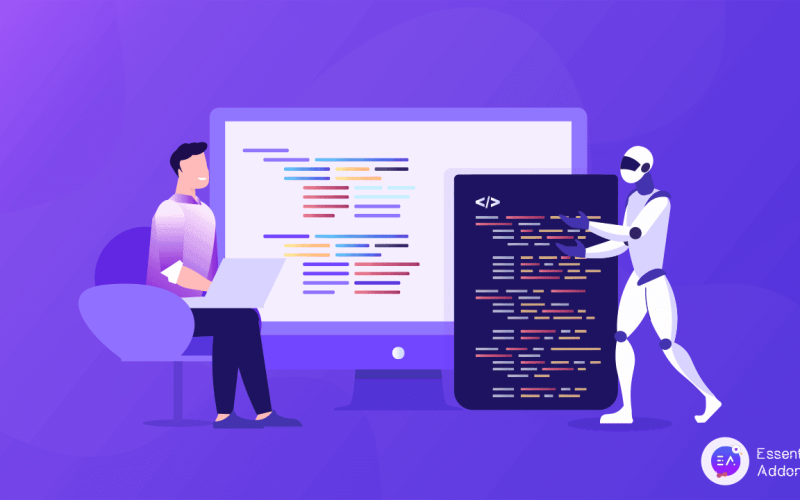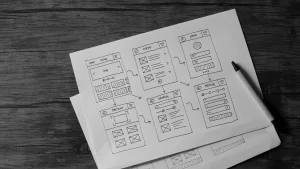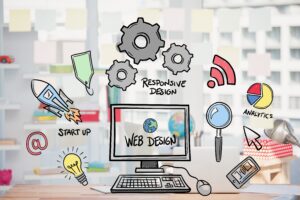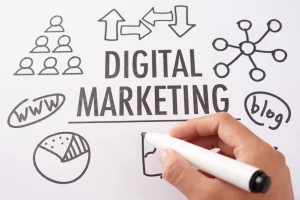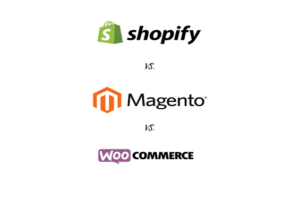Web design and development have undergone significant changes since the inception of the internet. User-centric design has always been a critical aspect of web design and development, and it continues to be so today. With the rise of AI, many people are wondering whether web design and development are under threat from AI. In this blog, we will explore the impact of AI on web design and development and whether it poses a threat to the industry.
Firstly, let’s understand what AI is and how it works. AI refers to the simulation of human intelligence in machines that are programmed to learn, reason, and solve problems. AI-powered tools have been around for a while in web design and development and have been used to automate many tasks, such as image optimization and website speed optimization. AI-powered chatbots are also commonly used on websites to provide customer service and support.
Web design and development are not immune to the impact of AI. In fact, web design in Toronto are increasingly leveraging AI-powered tools to automate repetitive tasks and speed up the design process. For example, AI-powered tools can automate the creation of wireframes and layouts, making it faster and more efficient for web designers in Toronto to deliver high-quality designs. Moreover, AI-powered tools can analyze user behaviour and preferences to provide insights into how to design a website for a better user experience, which is a critical aspect of web design and development.
In the context of E-Commerce website development, AI can have a significant impact on website personalization. AI-powered algorithms can analyze user data, such as search history and browsing behaviour, to provide personalized recommendations and content. For example, an E-Commerce website in Toronto can use AI to provide product recommendations to users based on their purchase history and search queries. Personalization has become a critical aspect of user experience in E-Commerce, and AI is making it easier to implement.
However, it is essential to understand that AI is not a substitute for human creativity and expertise. While AI can automate many tasks, it cannot replace the creative input that web designers and developers in Toronto bring to the table. Web design agencies in Toronto have a unique perspective and skill set that machines cannot replicate.
Moreover, AI has its limitations. One of the biggest challenges with AI is bias. Machine learning algorithms are only as good as the data they are trained on. If the data is biased, the AI will be biased as well. For example, if an AI-powered tool is trained on data that is biased against a particular race or gender, the tool will produce biased results. Bias can have significant consequences, especially in critical areas like E-Commerce website development in Toronto, where AI-powered tools are used to make decisions about product recommendations and pricing.
Another challenge with AI is the lack of transparency. Machine learning algorithms are often black boxes, which means that it is difficult to understand how they arrive at their results. This lack of transparency can be a problem, especially in critical areas like healthcare, where AI is used to make decisions about patient care.
Pros and Cons of AI for Web Design and Development
Like any technology, AI has its pros and cons. In this article, we will discuss the advantages and disadvantages of AI for web design and development.
Pros:
Increased Efficiency:
One of the most significant advantages of AI in web design and development is increased efficiency. AI-powered tools can automate many repetitive tasks, such as image optimization, website speed optimization, and creating wireframes and layouts. This automation can save web designers and developers a significant amount of time and effort, allowing them to focus on more creative aspects of web design and development.
Better User Experience:
AI-powered tools can analyze user behaviour and preferences to provide insights into how to design a website for a better user experience. This can include things like personalized recommendations and content, chatbots for customer support, and analyzing user data to optimize website performance. AI can help create a more personalized experience for users, which can lead to increased engagement and better conversion rates.
Improved Accessibility:
AI-powered tools can also help improve website accessibility for users with disabilities. For example, AI-powered tools can automatically generate alt text for images, making it easier for visually impaired users to navigate websites. AI-powered tools can also help improve the readability of websites for users with dyslexia or other reading difficulties.
Cons:
Bias:
One of the most significant concerns with AI is bias. AI-powered tools are only as good as the data they are trained on. If the data is biased, the AI will be biased as well. This can be a significant problem in areas like E-Commerce website development, where AI-powered tools are used to make decisions about product recommendations and pricing. Bias can have significant consequences and needs to be addressed.
Lack of Transparency:
Another concern with AI is the lack of transparency. Machine learning algorithms are often black boxes, which means that it is difficult to understand how they arrive at their results. This lack of transparency can be a problem, especially in critical areas like healthcare, where AI is used to make decisions about patient care.
Creativity:
AI is not a substitute for human creativity and expertise. While AI can automate many tasks, it cannot replace the creative input that web designers and developers bring to the table. Web design and development require a unique perspective and skill set that machines cannot replicate.
Cost:
Implementing AI-powered tools can be costly, especially for small businesses or startups. AI-powered tools require significant investment in terms of hardware, software, and skilled personnel. This can be a significant barrier to entry for many businesses.
In conclusion, AI is not a threat to web design and development but rather a tool that can be used to enhance the industry. Web design agencies in Toronto are increasingly leveraging AI-powered tools to speed up the design process and provide better user experiences. However, it is essential to understand that AI is not a substitute for human creativity and expertise. Moreover, AI has its limitations, such as bias and lack of transparency, which need to be addressed. The key is to use AI as a complement to human expertise, not a substitute for it. By doing so, web design and development in Toronto can leverage the power of AI to create better user experiences and drive innovation in the industry.

